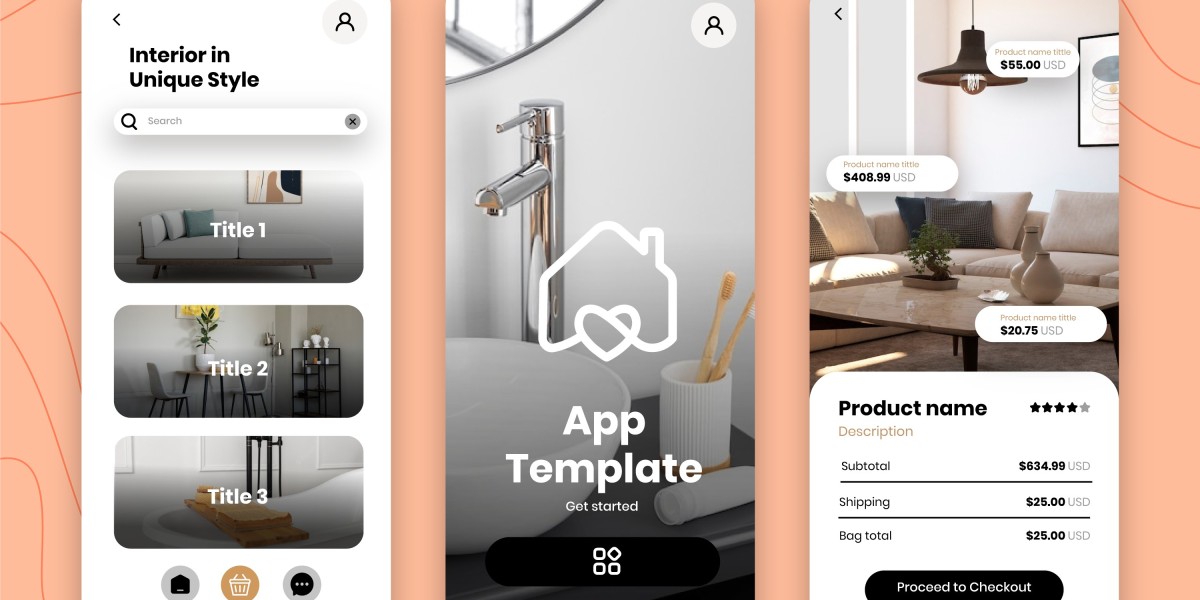Modern gig jobs are popular mainly because they are quick, simple, and available. Airtasker and other websites change how individuals hire people to help with home, furniture, or tech services. They allow users to communicate with nearby service providers right away. Access to seamless technology is possible once the foundation for planning, the quality of architecture, and a focus on users has been laid. However, what happens before we see the results to get everything working smoothly?
This type of platform serves a purpose larger than just job ads. Many mobile apps have all the modern online marketplace features you would expect and functions for checking reviews and confirming a user's identity. The platform will only improve and scale if all these components operate harmoniously.
Core Features That Power Task Platforms Like Airtasker
Anyone who wants to create a successful Airtasker app should first study its most important features. These features are:
- User Registration and Profiles: For the system to work, user registration must include the option to edit profiles, with proper identity verification for users who will use it.
- Task Creation and Browsing: Users can create tasks that indicate where, how much, and when they plan to do them. Service providers can browse and select tasks they are qualified to handle.
- Bidding and Offers: In most cases, providers will bid or offer on services, giving the pricing model greater flexibility.
- Ratings and Reviews: The important thing is that ratings and reviews are clear. User feedback and ratings make sure sellers are responsible and trusted.
- In-App Messaging and Notifications: App messages and notifications are necessary for easy conversations and regular updates.
- Secure Payments and Escrow: It is essential to use secure payments and escrow protection to ensure the safety of your payments until the work has been done.
- Admin Dashboard: Platform operations, rule enforcement and viewing statistics are simplified with an admin dashboard.
These elements are necessary to create the main user experience on Airtasker-style platforms.
Technology Stack Required to Build a Scalable Task App
Building a task marketplace calls for a carefully planned technology setup that ensures data is exchanged quickly, allows for user control and security and grows with user needs. This is an easy-to-follow way to set up a stack:
- Frontend: React Native or Flutter for cross-platform mobile apps; React.js or Angular for web interface.
- Backend: Node.js with Express or Django with Python for server-side logic.
- Database: PostgreSQL or MongoDB for scalable data storage.
- Real-Time Messaging: WebSocket or Firebase for instant messaging capabilities.
- Payment Integration: Stripe, PayPal, or Razorpay for secure transactions.
- Cloud Hosting: AWS, Google Cloud, or Azure for reliable infrastructure.
- Notifications: Firebase Cloud Messaging or OneSignal for push alerts.
Choosing the best stack helps your platform stay efficient as demand increases and protects your data.
Building a Seamless User Journey From Task to Completion
User journey mapping is a key part of designing an Airtasker Clone app. From beginning to end, each interaction should be smooth and sensible. Check out this general idea of how it works:
- Sign-Up/Login: You can easily sign up/login using social accounts.
- Task Posting: Task posting is made easy with a short form that allows you to set the budget, add a description, and add optional photos.
- Service Browsing: Service Browsing lets you filter through services by skill, budget, distance and rating.
- Offer Management: You can find, accept or deny offers and use chat and counter-offer alternatives.
- Task Progress Tracking: Throughout the experience, you will find updates on the progress of the task, from when it is assigned until it is completed.
- Payment and Feedback: Students will pay automatically upon task completion, and others will review their work.
All steps must be crafted to increase people's likelihood of finishing. Good UX design and testing performance are fundamental to this process.
Trust and Safety Mechanisms to Ensure Platform Reliability
Keeping all users safe is a significant challenge in a marketplace based on tasks. Using trust tools helps users stick with the platform for a long time and decreases trouble tickets.
- Identity Verification: Verify people's identities by asking for ID documents and confirming by phone or email.
- Background Checks: Background checks should be mandatory When working on childcare or repair services.
- Secure Escrow System: A secure escrow service keeps the funds until work is finished, avoiding most issues.
- Two-Way Reviews: When students rate each other, they team up to build shared principles and expectations.
- Dispute Resolution: A method for solving problems with delivering tasks or receiving payments.
Platform integrity is best preserved by blending technology and human intervention.
Admin Dashboard Features for Platform Control and Insights
Running the platform is primarily controlled through your admin panel. IT solutions guarantee clear visibility and management, allowing the organization to handle problems quickly.
Core admin features include:
- User Management: You can approve, block, or authenticate users and providers.
- Task Monitoring: It's possible to track all posted, accepted and completed tasks at any moment.
- Analytics Dashboard: The Analytics Dashboard allows you to see how your performance measures up, with data on conversion, daily active users, and revenue.
- Dispute Handling: A ticketing system is used to address complaints and refunds.
- Content Moderation: Mark any review or task as inappropriate when you notice something inappropriate.
With a strong admin backend, a company can safely scale its platform and maintain a high user experience.
Challenges in Development and How to Overcome Them
Developers and operators face unique problems when creating an Airtasker-style platform. Here is a list of some usual ones:
- Real-Time Performance: People expect to receive information quickly, so managing real-time features requires careful infrastructure planning.
- User Retention: Without something that engages them, users won't want to keep coming back. Loyalty rewards, updates, and good-quality assistance are here.
- Balance Between Demand and Supply: When introducing phone service in new regions, coordination between demand and supply is necessary.
- Fraud Prevention: Fraudulent payments, accounts, and spam activities must be controlled using technological and policy methods.
- Platform Scaling: Just because something works for a small group of users doesn't mean it won't break with a larger group. Both cloud infrastructure and load testing are critical.
To resolve these challenges, you need to use an adaptable growth process, test your applications regularly, and provide clear communication loops.
Cost Breakdown and Time Estimate for Clone App Development
Because costs are based on what you need and where you are, here is an estimate for developing a simple version of Airtasker:
- A Simple Baseline: $15,000 – $25,000
- If you need a chat, a real-time system or escrow, choose a range between $10,000 and $20,000.
- For the Admin Dashboard, you should budget $5,000 – $10,000.
- UI/UX Design costs between $3,000 and $6,000.
- Expenses for QA and Testing should be about $2,000 – $5,000.
- An estimated amount is $35,000 to $60,000.
- Development of a Software Project Takes 12 to 20 Weeks
You can save resources and effort with available modules, less expensive open-source parts or an experienced team that clones existing designs.
Conclusion:
An Airtasker-fashion platform is a complex but rewarding product to construct, requiring meticulous planning, execution, and long-term help. Everything—from user onboarding to price dealing—wishes to be steady, person-pleasant, and scalable. Whether you're a startup founder or a company trying to input the provider marketplace industry, understanding the nuts and bolts behind any such platform is step one to fulfillment. If performed correctly, your platform can become crucial in developing an economic system.



